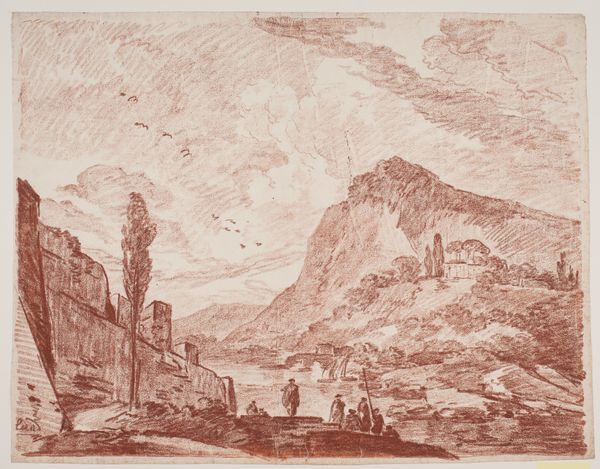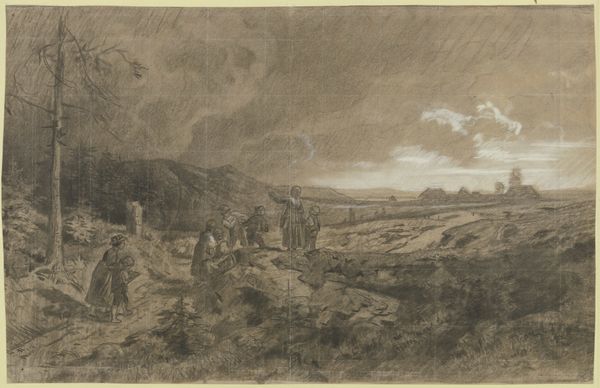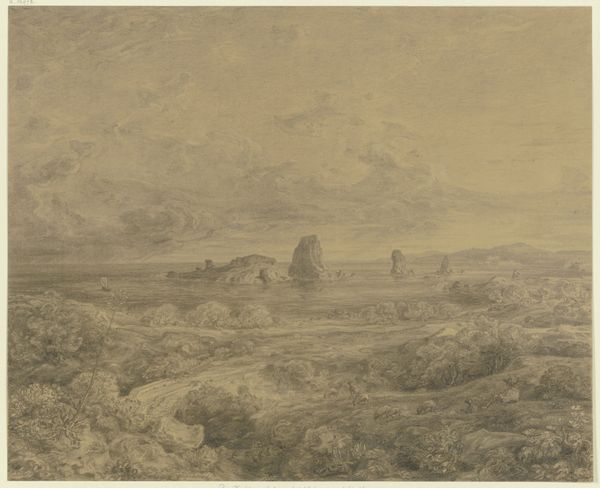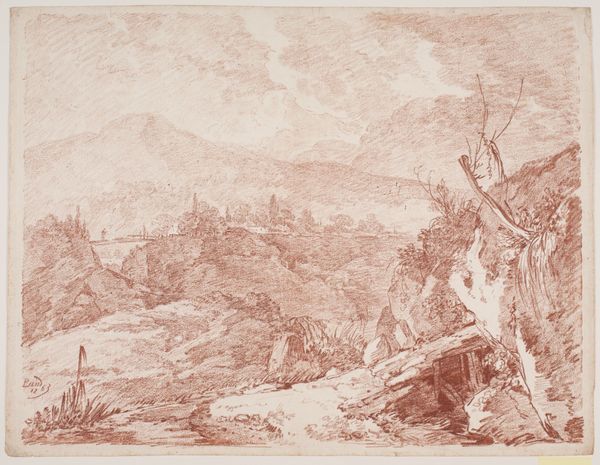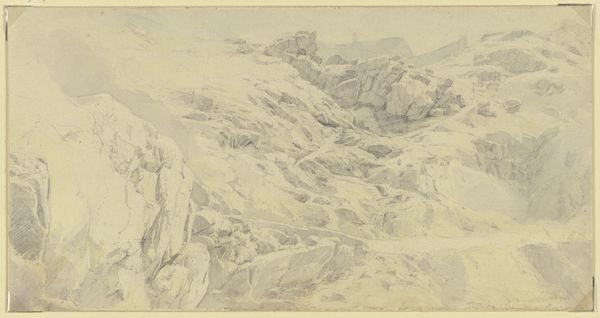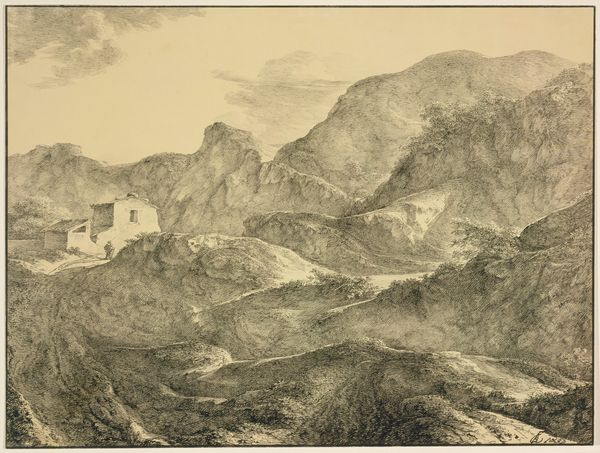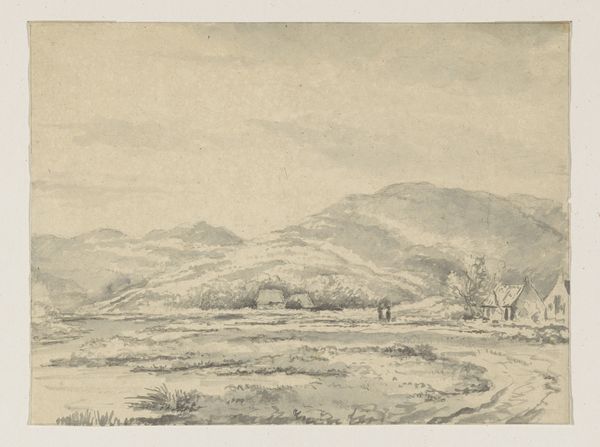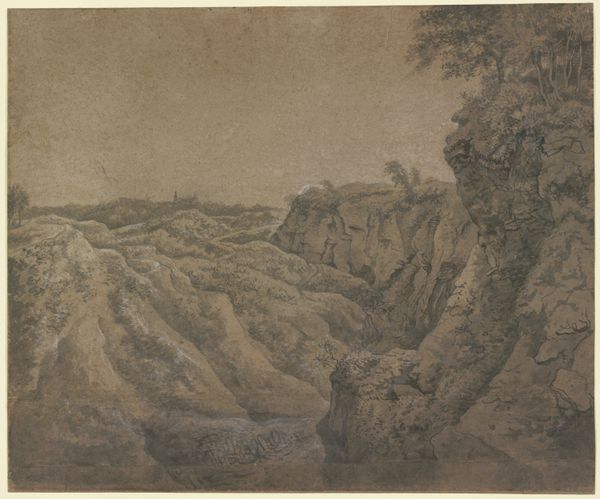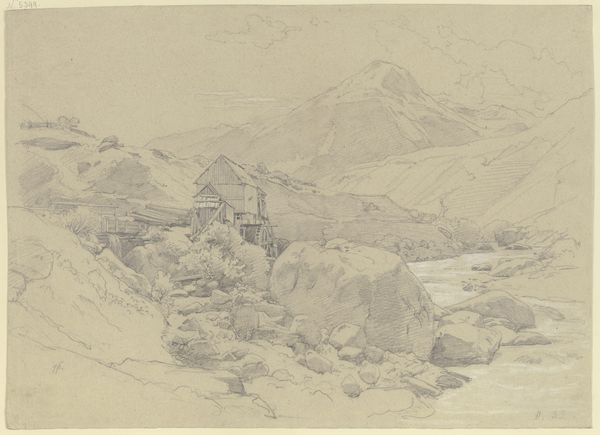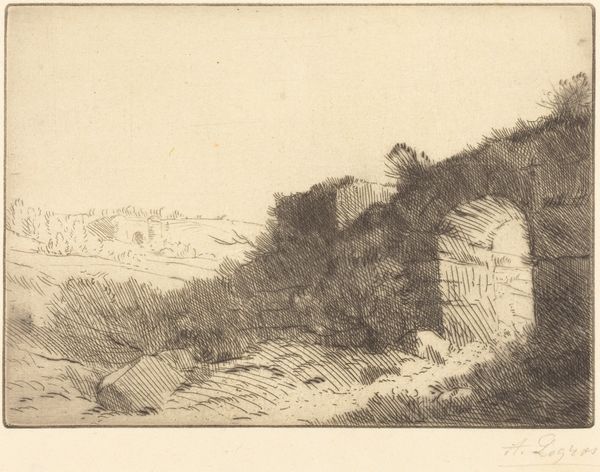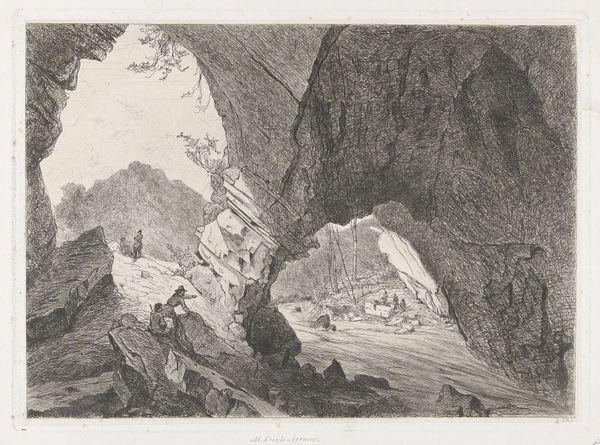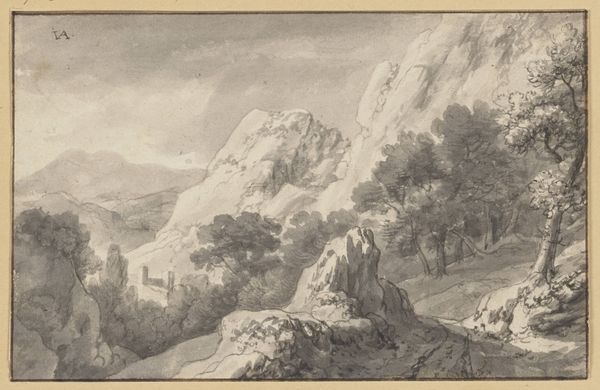
drawing, paper, ink, pencil, frottage, architecture
#
drawing
#
landscape
#
paper
#
ink
#
romanticism
#
pencil
#
history-painting
#
frottage
#
architecture
Copyright: Public Domain
Curator: Eduard Wilhelm Pose created this ink, pencil, and frottage drawing entitled "Burgruine mit Fachwerkanbauten in einer Felslandschaft" in 1834. It resides here at the Städel Museum. Editor: My first thought? Bleak. It’s incredibly detailed but almost entirely in grey tones. It has this air of quiet desolation. The building feels abandoned, reclaimed by the earth. Curator: And that desolation is a very Romantic trope. The ruin signifies the decline of societal structures, a kind of commentary on the fleeting nature of human endeavors. But Romanticism also involved celebrating regional histories. This likely depicts a very specific location, imbueing it with significance. Editor: Interesting how he layers techniques. You mentioned frottage? I'm curious how the textures play into the overall somber feel, and if he's trying to mimic the way that real stonework degrades over time. He obviously put effort into accurately rendering this structure. It really highlights the weight of time. Curator: Precisely! Think of how these images circulated. Depictions like this, whether entirely factual or partially idealized, played a role in cultivating historical narratives and regional identities. Consider also who purchased these works; how might these kinds of landscape paintings serve nationalistic and conservationist discourses at the time? Editor: And how the choice of media affected distribution! Prints were more accessible to the average citizen than oil paintings. The means of production would really influence who could consume the image. Curator: Exactly! Also, note how the light, while dim, emphasizes certain architectural details. The half-timbering of the newer additions to the stone structure becomes more defined, telling us about the stages of this place and how society has affected its construction. Editor: Looking closely, the way he's rendered the stone feels so tangible. I’d love to know the specific tools and paper he used, too. That texture—is that pencil or some other process at work? It's far more tactile than one usually sees in pencil drawings. Curator: The combination of mediums certainly adds complexity. A lot of detailed looking, analyzing how a drawing on paper can reveal broader understandings about social histories. Editor: Absolutely. It really shows how the act of making art—the specific processes, the materials available—is always intertwined with its cultural context and impact.
Comments
No comments
Be the first to comment and join the conversation on the ultimate creative platform.
